Photo
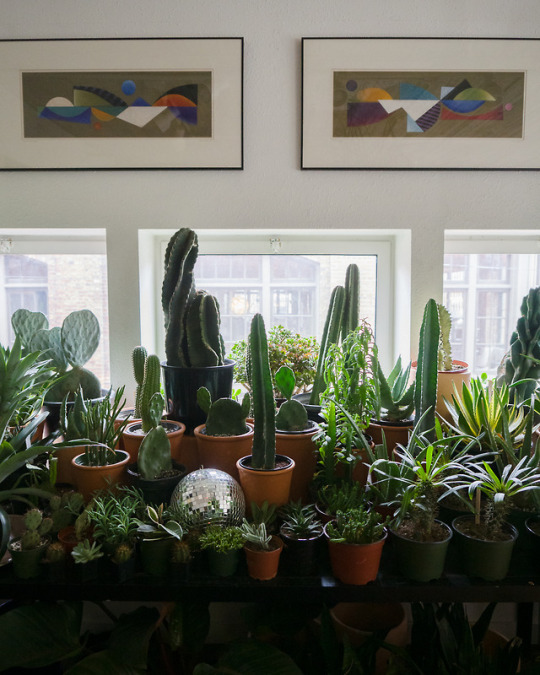
we’ll plant it for you - even spiky cacti - on the house!
2K notes
·
View notes
Text
Yall ever just think about how 31% of all cacti are threatened
105 notes
·
View notes
Photo


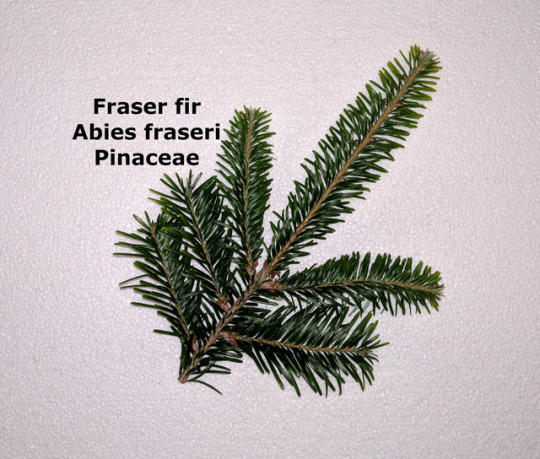
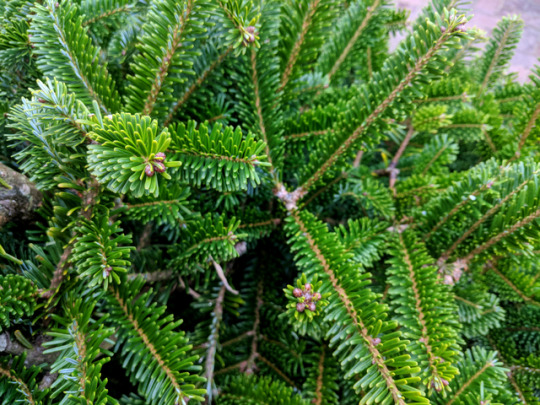
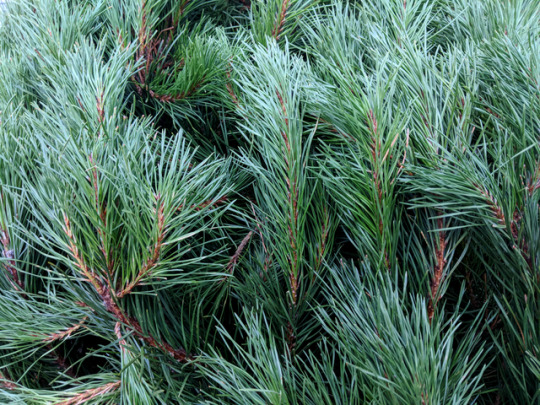

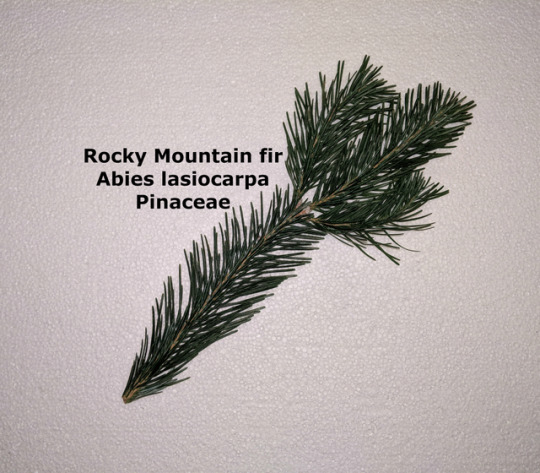

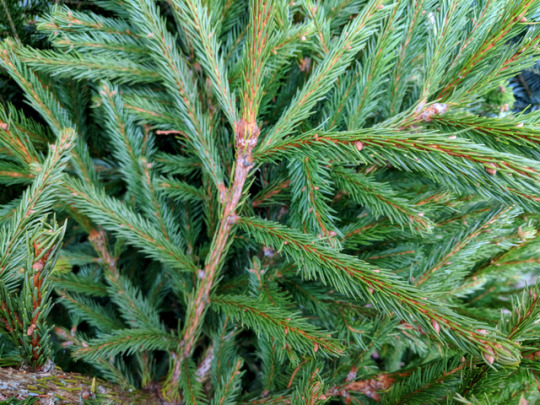
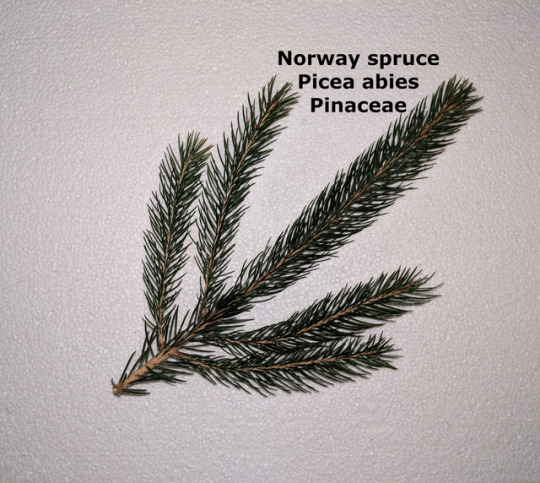
Know your festive conifers
I mentioned before that I started working in a garden centre -I’m so happy my change-of-career plans are already beginning to work!- and today it’s actually been a whole month. This first month there has been decisively marked from the very beginning by the fact Christmas is approaching: my first day happened to be when the main delivery of Christmas trees arrived, so it was entirely spent unloading hundreds of conifers, which we then freed from their nets, separated, measured and finally positioned in their pens during the following days.
Needless to say, I’ve learnt a lot about the most common Christmas trees you could find in a garden centre in the UK this time of the year. I’ve also ended up reading briefly about the tree farming industry and what it entails in the UK, rest of Europe and America with their differences. But this is not meant to be a post about a tradition which is quite new to me -decorating a real cut tree is not nearly as popular in Italy- its history or the industry it supports, so let’s get to the trees.
From top to bottom, they are ordered by their popularity as I’ve experienced it, although most of the stock was of the first two species and we only offered a few of the other three.
1. Nordmann fir Abies nordmanniana, Pinaceae
Very large tree native to the southern and eastern coast of the Black Sea. It’s considered the favourite and the best seller in the UK for two main reasons: it retains its needles, which are soft and have a notched tip, and its spaced layers of symmetrical, almost horizontal, sturdy branches are ideal to accommodate heavy or large ornaments. Especially when young and under 6ft it can look quite wide and bushy at the bottom with a sparse top and often a very long and straight leader.
2. Fraser fir Abies fraseri, Pinaceae
Medium-sized tree native to the southeastern Appalachian Mountains. Also very popular, mostly because it’s sheared in the field to retain a conical shape and this results in a slimmer bottom, ideal for small spaces, and high density of soft branches, which work better with small, light ornaments. The stem and branches seem to grow in a sinuous fashion and the tree often has more than a single central leader tip, which is generally not straight, but twisty too. Its citrus-y sent and the ability to retain its needles help making it a popular choice.
3. Lodgepole pine Pinus contorta, Pinaceae
Medium to large tree or shrub, depending on the subspecies, native to western and north-western North America. As the only Pinus in the list, it looks rather different from the other trees and decorating it can be a challenge, people seem to either love it or hate it, so we only stocked a handful of them. It tends to be quite bushy and, as the name suggests, the trunk can often be twisted. It smells like clean pine forest and is very good at holding its needles.
4. Rocky Mountain fir Abies lasiocarpa, Pinaceae
Generally medium-sized tree which shares its native area with the lodgepole pine in north-western North America. This was a novelty species at the garden centre and we only stocked a few large ones. Most people seemed to love its imposing, but airy and symmetrical structure and blue-grey hue and it’s probably my personal favourite. Its scent is aromatic and as interesting as the colour.
5. Norway spruce Picea abies, Pinaceae
Large tree native to an area spanning from the mountains of southern Europe to Siberia. Most people recognise it as the traditional, old-school Christmas tree, however it has now fallen out of fashion as the worst performing in the list when it comes to retaining its needles. For this reason we mostly stocked pot-grown trees of this species, and just a handful of small, cut ones. The short, thin needles give it a feathery look compared to the others and its structure is similar to that of the Nordmann fir.
Now, just out of curiosity, I’d love to see lists made by my counterparts in the rest of the world! Also, if you have bought a tree, what species is it?
819 notes
·
View notes
Text
can you believe that these small burritos…

turned into these BIG BURRITOS?!

2K notes
·
View notes
Text
A Crash Course in Warding
Let’s just start a series of crash courses in witchcraft, since sometimes we need to learn things the quick and dirty way. Today, let’s talk about wards.
What are wards?
Wards are protective energy barriers. They keep things out. You can place them around your home, certain rooms, even on certain objects. With practice and clear intentions, you can focus the wards to block out everything or only certain things. We’ll get to that in a bit.
Why should I ward my space and my things?
Wards can keep out all sorts of things you don’t want in your home. They can block out negative entities, wayward spirits, mischievous entities, demons, and (if you’re really good at what you’re doing) even gods. Some people ward their divination tools so they know there are no spirits tampering with the results.
So what do I need to do first?
Cleanse. This is very important. Wards are kind of like walls, or perhaps more accurately, bubbles. If you don’t clean the space first, you might trap things inside your ward bubble. You do not want that. There are lots of methods of cleansing, from burning sage to spritzing oil-infused water. Find a method you’re comfortable with and cleanse everything you’re going to be warding.
I’ve cleansed my home/item. Now what?
Now we ward. I’m going to give you a couple methods. Let’s start with my favorite, incense warding.
Incense warding can also be done with spritzes of water/essential oil blends or herb-infused water if you can’t have smoke in your space. Whichever you’re using, you want to have a blend of protective herbs. Bay leaves, cinnamon, ginger, mustard seed, and salt are some great options that you can find in the grocery store, no fancy witch shop necessary. If you’re using incense, make sure you’re using natural incense and not super cheap stuff that’s artificially scented. The magic is in the herbs, and you won’t get that from fake scents.
How to Incense/Spritz Ward an Item
Smoke or spray item.
Visualize the smoke or spray clinging to the item and wrapping around it like a tight blanket, protecting it from anything that would cause harm (or interference, etc.).
How to Incense/Spritz Ward Your Space
Pick a place to start. I always start at my altar, but it’s up to you. If you’re doing multiple floors, start either at the top or bottom floor.
Moving continuously to your right, smoke or spray along the walls and door frames. As you go, imagine a barrier being formed around the walls, ceiling, and floor, pushing outwards to fill the room. Visualize the smoke or spray forming the barrier to keep out anything that will do you harm. [If you have a hard time with visualization, you can simply focus on the intent of the smoke or spray keeping things out.]
Keep moving right, following the layout of your home, making sure you get all the closet spaces. You basically want to outline the entire area you’re protecting, whether it’s you’re room or your whole house.
For multiple floors, repeat on each level.
For big layouts where there are rooms in the middle, go around those rooms as well.
I like to reinforce the wards over outside doors, windows, and mirrors. These are all passages of sorts, and when I reach them, I use the incense to draw a pentagram in the air over them. This is entirely up to you.
You’re done when you’ve reached the point where you began.
So why do we go to the right? Is that important?
Kind of. Going to the right is like going clockwise. It’s about making things and progression, where going to the left or counter-clockwise is about deconstruction or reversal. [I read this idea in a witchy book a long time ago and will try to find a source when I can. If you honestly don’t feel it makes a difference, do whatever you’re comfortable with.]
Can I place wards that keep out certain things but not others?
Sure. When you’re going around your space/warding your item, your intent is what’s important. I like to ward out entities that mean harm - it’s nice and general and doesn’t keep the fae out. Some people might want certain spirits and not others. Have your intentions clear in your mind as you place your wards.
That’s neat and all, but what are some other ways to ward?
Let’s list a few.
Symbol/Sigil Wards
Choose (or make) a symbol or sigil that has protective properties. I’ve done this with Pluto’s astrological symbol because I worship him and it’s my way of being like, “Hey, Pluto. Please protect me, kthanxbai.” Pentagrams are nice and basic witchy/pagan symbols if you like them.
Draw the symbol over doors and windows. You do not literally have to draw it. It can be in water, incense smoke, or just your finger against the surface if you want.
As you’re drawing, make sure you have your intentions in mind - that nothing harmful can pass through this door, that the windows remain closed against entities, etc.
Energy Bubbles (if you have control over your energy)
Pick an item - any item.
Get your warding intentions in mind.
Channel lots of energy into the item. Visualize it emanating from the item in a bubble to fill your space.
If you’ve got mad skillz, you can form the bubble to the walls and be super exact with where its barriers are.
Vocal Wards
If you like spoken (or thought) spells, come up with a small chant to protect your space.
You can repeat this chant as you focus on your item being protected or as you walk around your home, protecting every room.
This is really great to incorporate into basically any other form of warding and gives your magic an extra bit of oomph.
I’ve heard wards can “fade” over time. True or false?
Wards are just energy. Like all energies, they can disperse and weaken over time, or if something particularly nasty puts effort into destroying them. Redo your wards every so often (I do mine every few months, but it’s up to you), and especially before spiritual interactions. I also like to do mine after I’ve had lots of company, to kind of clear out family’s lingering energies and reinforce what I don’t want in my house.
In general, the intent of your wards is the most important part. Know what you want to keep out. This concludes our crash course on warding. Now go forth and protect some stuff!
38K notes
·
View notes
Text
Edible Magickal Flowers and Folk Lore

The culinary use of flowers dates back thousands of years to the Chinese, Greeks and Romans. Many cultures use flowers in their traditional cooking, medicine, and magick.
Adding flowers to your food can be a nice way to add color, flavor and a little magickal whimsy. Some are spicy, and some herbaceous, while others are floral and fragrant. The range is surprising. Flower petals can be used in salads and as garnish for desserts, but they also inspire magickal creative uses as well. Use them to make floral spirit water for rituals, as a medicinal tea, or add to a healing spell or love potion…. the possibilities are endless.
TIPS FOR SAFE AND TASTY DINING:
Not all flowers are edible (those listed below are safe for consumption) - As lovely as eating flowers can be, some can also be a little … deadly, so only eat flowers you know to be consumable — if you are uncertain, consult a reference book on edible flowers and plants. (Always refer to the botanical name when verifying whether a flower is safe to eat.)
Just because a flower is edible doesn’t mean it will taste good. Some will be more to your liking than others – it’s all a matter of taste. Keep in mind that the stamen, pistil and sepal of some blossoms are bitter and can contain pollen that may detract from the true flavor of the flower. Consuming only the petals will further heighten the appeal factor.
Eat flowers you have grown yourself, or know to be safe for consumption. Flowers from the florist or nursery have probably been treated with pesticides or other chemicals.
Do not eat roadside flowers or those picked in public parks. Both may have been treated with pesticide or herbicide, and roadside flowers may be polluted by car exhaust.
Eat only the petals, and remove pistils and stamens before eating.
If you suffer from allergies, introduce edible flowers gradually, as they may exacerbate allergies.
To keep flowers fresh, place them on moist paper towels and refrigerate in an airtight container. Some will last up to 10 days this way. Ice water can revitalize limp flowers.
1, Allium
All blossoms from the allium family (leeks, chives, garlic, garlic chives) are edible and flavorful. Flavors run the gamut from delicate leek to robust garlic. Every part of these plants is edible. Garlic is masculine in nature and associated with the planet Mars, the element fire and the sign Aries. It is sacred to Hecate and is a suitable offering to her left at a crossroads. Garlic has antibiotic properties, but should not be used directly on wounds or in poultices or salves because it can be irritating to the skin and may inhibit blood clotting.
2. Angelica
Depending on the variety, flowers range from pale lavender-blue to deep rose and have a licorice-like flavor. Believed to have originated in Syria, angelica is now found just about everywhere. In ancient times it was used to ward off the plague and evil and as a cure for poison and… well, just about everything else. Angelica is associated with the angels Michael and Gabriel. It is aligned with the sun and the element of fire and sacred to Venus. Angelica tea is useful for colic, gas, indigestion, hepatitis, heartburn, nausea, ulcers and various other digestive ailments.
3. Anise Hyssop
Both flowers and leaves have a subtle anise or licorice flavor. Anise is one of the oldest known plants that were grown for both culinary and medicinal use. Anise is associated with the element of air, the God Apollo, the planets Mercury and Jupiter, and the astrological sign Gemini. Anise is also considered masculine.
4. Basil
Blossoms come in a variety of colors, from white to pink to lavender; flavor is similar to the leaves, but milder. The word Basil comes from the Greeks, meaning “King”. Basil is sacred to Vishnu, Tulasi and Erzulie, masculine in nature, and associated with the element of fire and the planet Mars. Basil helps steady the mind, brings happiness, love, peace, and money and protects against insanity.
5. Calendula / Marigold
A great flower for eating, calendula blossoms are peppery, tangy, and spicy — and their vibrant golden color adds a dash of magick to any dish. The ancient Egyptians, Greeks and Romans all loved calendula and used it for culinary and healing purposes. During the medieval period it was considered a cure for just about everything. Marigold is associated with the Sun. Calendula symbolizes love and constancy. It is great for wedding bouquets and decorations. It is the traditional “he loves me, he loves me not” flower and is useful for love potions. Dried petals can be strewn to consecrate an area or burned in consecration incense. They are also a good addition to dream pillows.
6. Carnations
Petals are sweet, once trimmed away from the base. The blossoms taste like their sweet, perfumed aroma. In ancient Rome, carnations were known as “Jove’s Flower” as a tribute to their beloved king of the gods, Jupiter. Carnations are masculine, associated with the Sun and Jupiter, and with the element fire. Those things that fall under the rule of Jupiter are ideal for use in magickal applications related to luck, money, good fortune, status, legal matters, fertility, friendship, ambition, career, success and protection. The flowers can be used to lend strength in healing applications. The practitioner can also use carnation essential oils to increase health and vigor.
7. Chamomile
Small and daisy like, the flowers have a sweet flavor and are often used in tea. Ragweed sufferers may be allergic to chamomile. The Romans used Chamomile for incense. Chamomile was used in ancient Egypt for fevers and was dedicated to their Sun God Ra. Chamomile is associated with the sun, Leo and the element of water. It helps cleanse and invigorate the throat chakra (5th). It is associated with various Sun Gods, including Cernunnos, Lugh and others. It is used in spells for money, peace, love, tranquility and purification.
8. Chrysanthemum / Mum
A little bitter, mums come in a rainbow of colors and a range of flavors range from peppery to pungent. Use only the petals. In Celtic folklore, chrysanthemums in the garden were considered a meeting place for the faeries. Chrysanthemum is masculine in nature and resonates with the energy of the Sun and the element of fire. Chrysanthemum has been used for burial rituals and is a suitable decoration for Samhain and for ancestral altars. The dried flower heads of chrysanthemum can be burned during house blessings ceremonies.
9. Dandelion
The bright yellow flowers should be gathered as soon as they open. Remove the green bits from the base of the flower before using. These can be added to wines, vinegar or jellies. The name dandelion comes from the French, “dent de lion” which means “tooth of the lion”. The dandelion is masculine in action and associated with the planet Jupiter, the element of air and both Pisces and Sagittarius. It is also associated with any solar deity, Hecate, Brigid and Belenos. A tea of the flowers and leaves may be consumed to increase psychic ability, while pouring boiling water over a bowlful of roots will aid in calling spirits. You can also make a wish and blow the seeds off a dandelion head.
10. Lavender
Sweet, spicy, and perfumed, the flowers are a great addition to both savory and sweet dishes. Some of the earliest recorded uses of lavender are by the Roman soldiers who used the wild-growing plant to perfume their bathwater and wash their clothes. Lavender is masculine in action and associated with Mercury. It is also associated with the element of air and the astrological sign Virgo. It may be used as an asperging herb (to sprinkle water for purification purposes) and dried lavender sticks or wands can be burnt like incense. It is also useful in spells to sharpen the mind, to encourage or strengthen pure love and to encourage fertility. The scent of lavender is relaxing and uplifting all at once making it a great aromatherapy for stressed out or depressed individuals. Try adding some lavender oil to your bath or add it to mild oil for a relaxing massage at the end of a hard day. Stuffing a pillow with lavender buds may help insomniacs relax and fall asleep and soothes headaches.
11. Oregano
The flowers are a pretty, subtle version of the leaf. Oregano is ruled by Venus and the element of air and associated with Aphrodite. It is used in spells for happiness, tranquility, luck, health, protection and letting go of a loved one. It can also be used in spells to deepen existing love. When worn on the head during sleep, it is said to promote psychic dreams. Oregano symbolizes joy. Use it for rituals celebrating joyful occasions, or in spells to bring joy into one’s life.
12. Rose
Remove the white, bitter base and the remaining petals have a strongly perfumed flavor perfect for floating in drinks or scattering across desserts, and for a variety of jams. All roses are edible, with flavor more pronounced in darker varieties. From the time of Solomon, the rose has been the flower most closely linked with love. The rose was sacred to Venus, the Roman goddess of love, and was connected to her messenger, Cupid. Roses have been cultivated for over 5,000 years. Roses are associated with Aphrodite, Adonis and Eros. Rosewater is a protective agent worn on clothes. Rose petals can be added to charms against the evil eye.
13. Rosemary
Flowers taste like a milder version of the herb; nice used as a garnish on dishes that incorporate rosemary. The word Rosmarinus is from the Latin meaning “dew of the sea”. Rosemary is also associated with Aphrodite and appears in many ancient images of Her. Rosemary was used to ward off evil spirits and nightmares. The wood was used to make musical instruments. Rosemary is male in nature and ruled by Leo, the element fire and the sun (or Moon, depending who you ask). It’s sacred to Hebe, Aphrodite and the Virgin Mary. Rosemary can be used in spells for fidelity and remembrance as well as to dispel jealousy. Rosemary is useful for ritual baths, and for making sacred herbal water for ritual cleansing, blessing and purification. Bathing in rosemary will enhance your memory.
14. Sage
Blossoms have a subtle flavor similar to the leaves. Sage is a hardy perennial of the mint family. The Romans regarded sage quite highly and much sacrifice and ceremony was associated with its harvest. They believed it stimulated the brain and memory and used it to clean their teeth. Sage is masculine in nature and associated the element of air and the planet Jupiter. Sage is sacred to the Greek Zeus and Roman Jupiter. It is also a symbol of the Virgin Mary. Sage is used in magical workings for immortality, longevity, wisdom, protection and the granting of wishes. Sage is also believed to help alleviate sorrow of the death of a loved one.
15. Sunflower
Petals can be eaten, and the bud can be steamed like an artichoke. Sunflower is associated with the sun and all solar deities. Its essence helps balance the first chakra and also helps with confidence in leadership roles. Sunflower oil can be used as carrier oil for healing oils used in massages and ointments.
16. Violets
Another famous edible flower, violets are floral, sweet and beautiful as garnishes. Use the flowers in salads and to garnish desserts and drinks. In Roman mythology, violets were said to be lesser goddesses who once dared to rival the beauty of Aphrodite, goddess of love and beauty. Violets are affiliated with the planet Venus or Pluto and are associated with the nymphs of ancient Greek myths. Violets are also associated with death and rebirth through the story of Attis. Violets are useful in love spells and may be carried as an amulet to increase one’s luck in love. Try combining them with lavender for an enhanced effect.
Sources: HerbalRiot, Cheralyndarcey, Witches of the Craft, Inspirationforthespirit, Witchipedia
7K notes
·
View notes
Text
Things to Research as a Beginner Witch
• The history of witchcraft
• Famous witches, if you’d like
• Types of witches
• Types of magick (white magick, chaos magick, etc)
• Types of spells (curses, hexes, etc)
• Types of divination (tarot, scrying, etc)
• Talismans vs Sigils (and what each are)
• Seals
• Maybe some alphabets if that’s your thing
• Some witchy symbols
• Deities (For pagan witches)
• Let it spread from there!
36K notes
·
View notes
Text
I was soaked and freezing cold by the time we reached this alpine lake, but something about the sound and tranquility kept me completely unbothered.
233K notes
·
View notes
Photo

Agave Victoriae Reginae ‘Himesanoyuki’ is a super compact dwarf form of Agave Victoriae Reginae
446 notes
·
View notes







